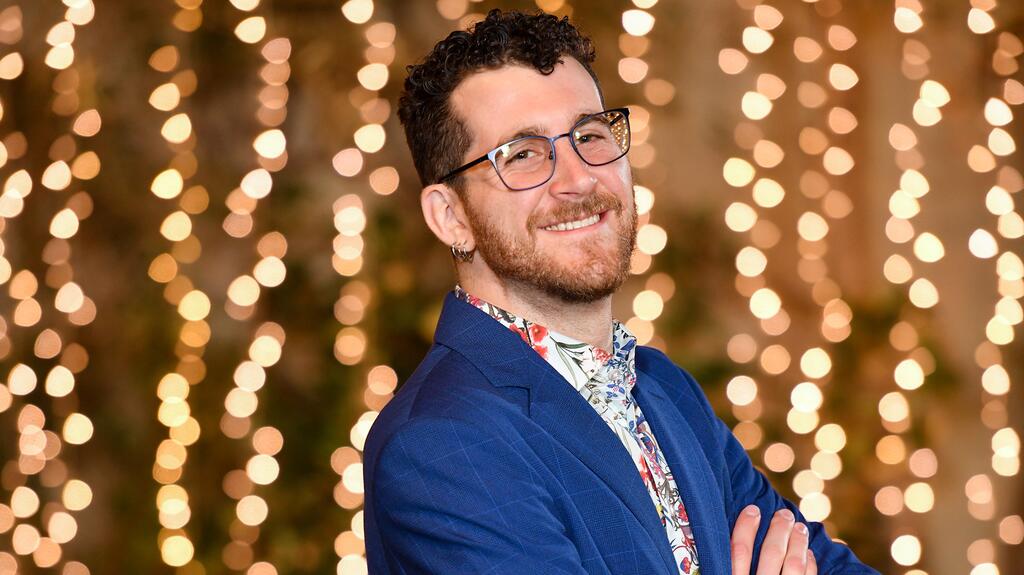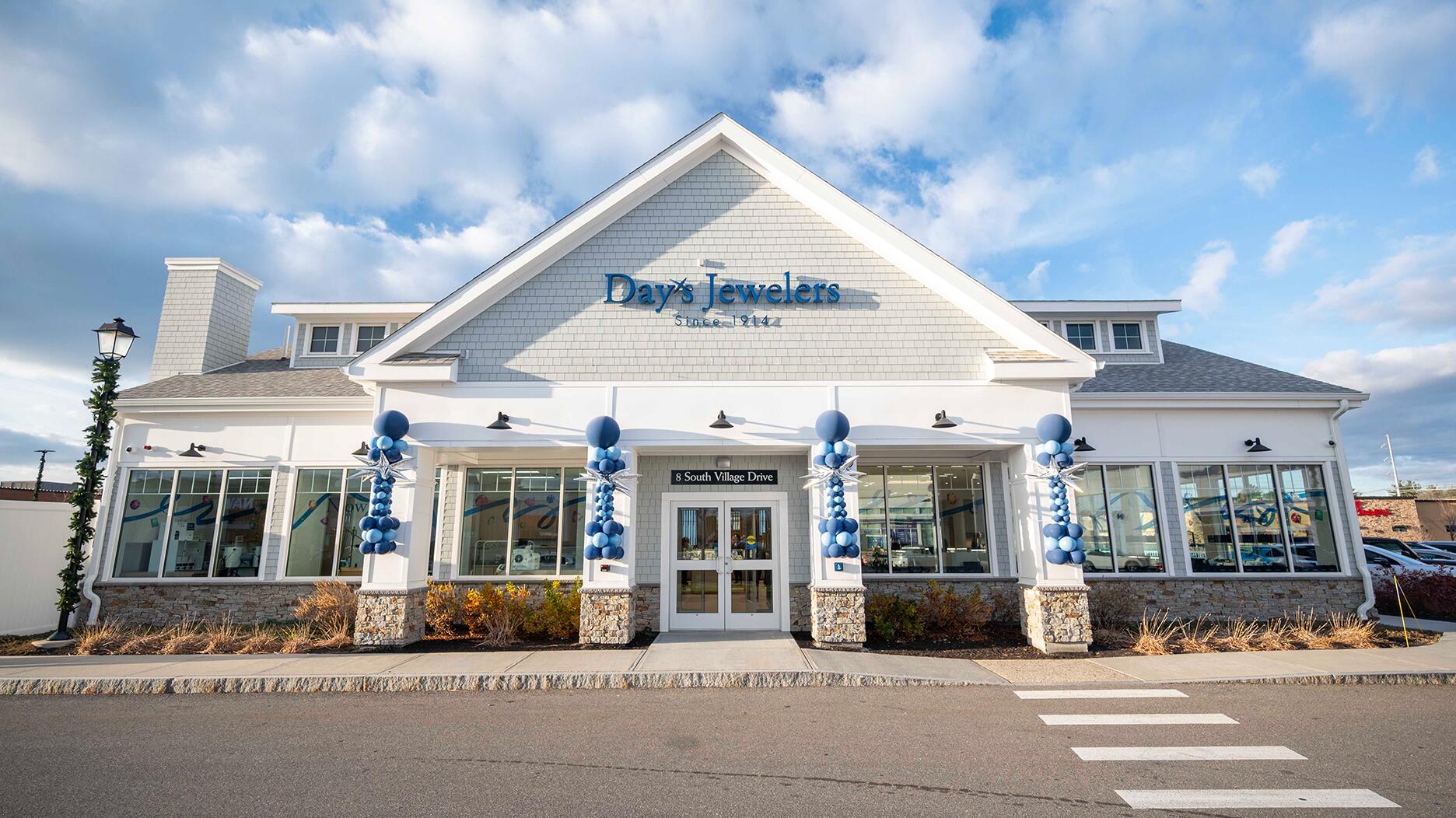5 Things to Know About Selling Jewelry to the LGBTQ+ Community
Color Source Gems’ Jeremy Chalchinsky covered authentic advertising, anti-discrimination policies, and more during an AGS Conclave session.

Jeremy Chalchinsky, vice president of sales at Color Source Gems, was at the helm, PowerPoint clicker in hand as his mother and coworker, Rachel, observed from a few rows back.
He clicked to the first slide, starting his presentation with an unexpected opening line.
“I’m not gay,” said Chalchinksy, swiftly ushering out the elephant in the room.
So, what was he doing up at the podium?
“For a long time, I have heard people say that it’s up to the allies to stand up and say something. I decided to finally be that person within our industry,” he said in a statement to National Jeweler.
While he had reservations about being the right person for the topic, and concerns about potential backlash, he took inspiration from a framed quote in his office: “Feel the fear and do it anyway.”
The industry has begun having the uncomfortable but necessary conversations about race, but the diversity discussions have rarely included the LGBTQ+ community, he said.
“So many of my peers and friends are members of the LGBTQ community. They have lives, they love, and they buy jewelry. They’re also members within our industry community. We all deserve to feel safe and represented.”
“I was grateful to AGS for giving me the opportunity and for being so inclusive and open to diversity,” Chalchinsky concluded.
Here are five key takeaways from his presentation.
Know your customer.
Chalchinsky started his presentation with the basics, going over each letter in the LGBTQ+ with a brief explanation.
He delved into hot topics and issues specific to each community, like the difference between bisexual and pansexual and what it means to be genderqueer or genderfluid.
He took special care to explain what it means to be trans, noting that this group faces the most discrimination.
While jewelers, and people at large, should take the time to educate themselves on each community, Chalchinsky made it clear that these questions should not be posed to the customer.
It is never appropriate, for example, to ask a customer if they’ve undergone surgery or hormone therapy, or to comment on whether or not they “pass” as a man or a woman.
A retailer wouldn’t ask a non-trans customer about their genitals, he noted, so the same rule applies here.
As for knowing which pronouns to use, there’s no clear answer, but the most important part is to show that you are trying to be inclusive, he said.
When in doubt, use “they” or the person’s name.
If a mistake is made, apologize and be mindful of how to address this customer going forward.
The LGBTQ+ community has a lot of spending power.
Chalchinsky pulled out some interesting statistics to accompany his presentation.
A 2021 U.S. Census Bureau survey gathered info on the sexual orientation of adults aged 18 and over.
More than 3 percent of respondents identified as gay or lesbian, 4 percent as bisexual, 2 percent as “something else” and 2 percent responded, “I don’t know.”
That’s about 11 percent of the U.S. population a jeweler could miss out on by not welcoming members of the LGBTQ+ community.
A Gallup poll from February 2022 found that about 21 percent of Gen Z adults, those born between 1997 and 2003, identify as LGBT.
“That is nearly double the proportion of millennials who do so, while the gap widens even further when compared with older generations,” Gallup noted.
Chalchinsky cited a Nielsen study that found LGBTQ+ consumers make about 10 percent more trips to the store per year than their non-LGBTQ+ counterparts and spend about 7 percent more during those trips.
Though they may spend more, they don’t necessarily earn more, he said, due to discrimination in housing, the workforce, healthcare, and other areas.
He noted, however, that many LGBTQ+ couples have no children or fewer children than their non- LGBTQ+ counterparts, which means that, though they might earn less, they have more discretionary income.

Set anti-discrimination policies in the workplace.
Retailers should have anti-discrimination policies in place that extend to all types of discrimination and protect both customers and employees.
A supportive and professional environment is important for all employees, said Chalchinsky.
Just because an employee hasn’t publicly identified themselves as LGBTQ+ doesn’t mean that they aren’t in need of protection against discrimination, he added.
It’s also crucial that everyone is on board.
Because many independent jewelry stores are still family-owned operations, Chalchinsky gave the example of a strong-willed aunt with even stronger opinions who has worked behind the counter for decades.
There should be no passes given to employees who are discriminating or making other employees uncomfortable, regardless of how difficult the conversation may be.
A negative interaction with an LGBTQ+ customer, particularly one caught on camera, could cost a jeweler its reputation. And remember, basically everyone has a camera now, said Chalchinsky.
Reach out to the LGBTQ+ community.
As with any customer demographic, jewelers should meet LGBTQ+ customers where they are.
Consider partnering with a local business that caters to the LGBTQ+ community, or sponsoring a drag night at a local bar, Chalchinsky said.
During the Q&A portion of the session, an attendee lamented that her store wanted to welcome LGBTQ+ customers, but she was wary of alienating the bread-and-butter customers in her conservative area by showing outward displays of support, like a Pride flag.
For business owners, it may be easier said than done not to take their money when bills and employees need to be paid.
Chalchinsky noted that many trendsetters on social media, whether on Instagram, TikTok, or another platform, are members of the LGBTQ+ community. One of his suggestions was to partner with these influencers, who will reach the intended audience and avoid the “conservative” consumers.
Hanging a rainbow flag is an outward display of welcoming, but a sticker in the window from the Human Rights Campaign can also convey support but in a more subtle way, an attendee suggested.
Stay away from “rainbow capitalism.”
On the topic of advertising, Chalchinsky introduced the term “rainbow capitalism” to the audience. It’s a term that describes the commercialization of the LGBTQ+ movement, particularly Pride Month.
Every June, retailers large and small roll out the rainbow merchandise, slapping the Pride flag on as many items as possible.
By July, the outpouring of “love” for the community dries up, while the flow of donations to anti-LGBTQ+ politicians continues.
Consumers can smell pandering a mile away, Chalchinsky said. Authenticity and consistency is key to advertising to this community.
Make a concerted effort to include LGBTQ+ consumers in advertising year-round and don’t rely on old stereotypes.
Some customers may want rainbow jewelry, he said, but LGBTQ+ customers enjoy all kinds of jewelry, just like everyone else.
He added that consulting people within the community about an ad campaign can be the difference between a rousing success and an embarrassing flop.
The Latest

The special-edition egg pendant ingested in a New Zealand jewelry store was recovered after a six-day wait.

Associate Editor Natalie Francisco plays favorites with Piece of the Week, selecting a standout piece of jewelry from each month of 2025.

The “Love and Desire” campaign is inspired by the magic that follows when one’s heart leads the way, said the brand.

How Jewelers of America’s 20 Under 40 are leading to ensure a brighter future for the jewelry industry.

Two awardees will receive free tuition for an educational course at the Swiss lab, with flights and lodging included.


Berta de Pablos-Barbier will replace Alexander Lacik at the start of January, two months earlier than expected.

Sotheby’s held its first two jewelry sales at the Breuer building last week, and they totaled nearly $44 million.

Roseco’s 704-page catalog showcases new lab-grown diamonds, findings, tools & more—available in print or interactive digital editions.

Winners will receive free registration and lodging for its fourth annual event in Detroit.

Here are six ideas for making more engaging content for Instagram Reels and TikTok, courtesy of Duvall O’Steen and Jen Cullen Williams.

The honorees include a notable jewelry brand, an industry veteran, and an independent retailer.

Carlos Jose Hernandez and Joshua Zuazo were sentenced to life without the possibility of parole in the 2024 murder of Hussein “Sam” Murray.

Yood will serve alongside Eduard Stefanescu, the sustainability manager for C.Hafner, a precious metals refiner in Germany.

Set in a Tiffany & Co. necklace, it sold for $4.2 million, the highest price and price per carat paid for a Paraíba tourmaline at auction.

The jeweler’s “Deep Freeze” display showcases its iconic jewelry designs frozen in a vintage icebox.

Take luxury gifting to new heights this holiday season with the jeweler’s showstopping 12-carat sphene ring.

This year's theme is “Unveiling the Depths of the Ocean.”

In its annual report, Pinterest noted an increase in searches for brooches, heirloom jewelry, and ‘80s luxury.

Starting Jan. 1, customers can request the service for opal, peridot, and demantoid garnet.

The new catalog features its most popular chains as well as new styles.

The filmmaker’s personal F.P. Journe “FFC” prototype was the star of Phillips’ recent record-setting watch auction in New York.

The new location in the Design District pays homage to Miami’s Art Deco heritage and its connection to the ocean.

Inflations, tariffs, and politics—including the government shutdown—were among consumers’ top concerns last month.

“Longtime favorite” presenters, as well as first-time speakers, will lead talks and workshops at the annual event in Tucson next year.

Silas Smith of Meridian Metalworks won the challenge with his pendant that blends Australian and American landscapes.

The sale of the 31.68-carat, sunset-hued stone was part of Sotheby’s first series of events and auctions in Abu Dhabi.

Most customers who walk into your store this month have made up their minds. Your job is to validate their choice, Emmanuel Raheb writes.




























